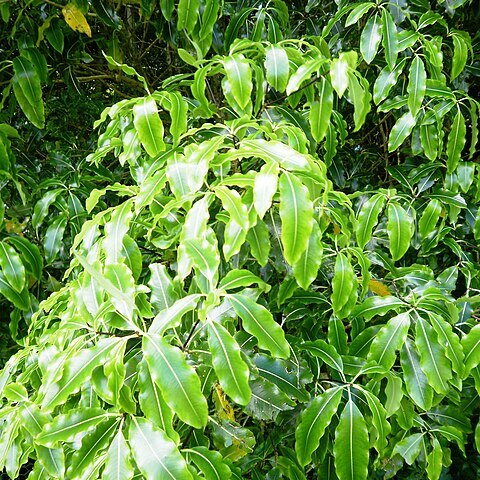Polygamodioec. tree with spreading branches, up to 12 m. tall, trunk up to 6 dm. diam., bark pale. Lvs alt., often approximate, 5-10-(15) × 2.5-4 cm., on rather slender petioles 1-2 cm. long. Lamina subcoriac., glossy, scented, elliptic to elliptic-oblong, acute to subacute, narrowed to petiole; margins us. undulate, midrib pale. Fls fragrant, in terminal compound umbels, subcorymbosely arranged. Peduncles and pedicels with scattered hairs; peduncles 1-2 cm. long, pedicels c. 5 mm. long. Sepals ovate to narrow-ovate, pale, membr., c. 2 mm. long; petals narrow-oblong, yellowish, 5-7 mm. long. Capsules glab., finely granulate, ovoid to elliptic in outline, 5-6 mm. long; valves 2 or sts 3; seeds immersed in viscid pulp, remaining ± covered by papery endocarp at dehiscence.
A tree. It grows 12 m tall. It has a strong lemon smell. The fruit are black seed capsules.

